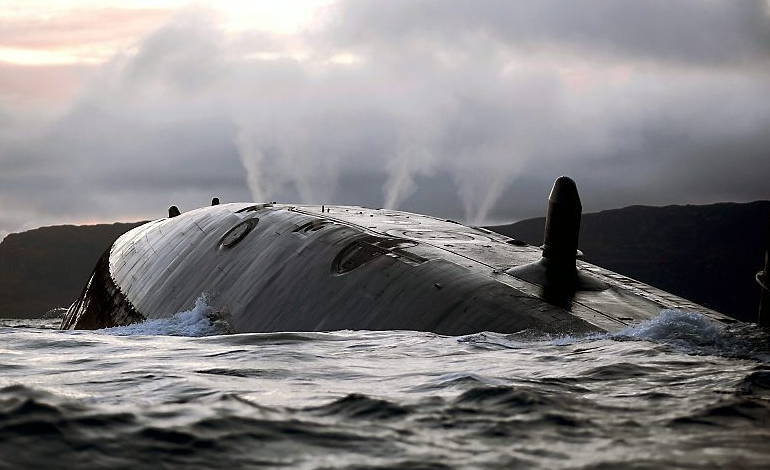
Arguing the case for nuclear-powered submarines, Tony Abbott laments that, under plans to acquire French-designed conventional submarines, the RAN will take delivery of a class that:
will have less power, less range, less speed and less capability … and that it will come into service about a decade later than would be optimal at a time when strategic circumstances are changing against us.
In response, Defence Minister Marise Payne reminded Mr Abbott that:
Australia currently lacks the qualified personnel, experience, infrastructure, training facilities and regulatory systems required to design, construct, operate and maintain a fleet of nuclear-powered submarines … Developing a sovereign nuclear-submarine fleet would come at a very substantial cost premium to our conventional fleet.
But there’s more to be said. Nuclear-powered attack submarines (SSN) are about force projection. They exercise sea control in support of surface strike groups, shadow ballistic missile submarines, and deny enemy battle groups access to zones of interest. So, setting Australia’s lack of industrial and operational capabilities aside, the debate needs to be whether an Australian government would seriously consider deploying SSNs against a regional superpower.
Securing sea lines of communication and the nation’s seaboard remains paramount in Australia’s national defence strategy. Diesel-electric submarines (SSK) excel in littoral or coastal waters, as is the case for the continent’s northern and northwestern approaches. And Australia’s strategic alliance interests are well served by providing the US Navy with an operational submarine capability it needs but doesn’t have. The US values RAN submarines for their littoral capabilities that form a natural extension to United States Navy (USN) nuclear submarine operations.
Both USN and Royal Navy submarines are powered by highly enriched weapons-grade nuclear material that doesn’t usually require replacing during a 30-year submarine lifecycle. The French Navy powers its submarines with high-density, low-enriched uranium that necessitates periodic refuelling.
While a typical peacetime deployment would be similar for nuclear and diesel-electric submarines (50 to 100 days), a nuclear-powered submarine would ordinarily only need to dock to take on provisions and weapons, or undertake repairs and maintenance, and for crew change.
In addition to long endurance, nuclear power provides an SSN with a sustained submerged speed of over 30 knots. That translates into far-reaching, covert mobility that outperforms surface units in any navy’s inventory. SSKs lack speed, but the size of an SSN limits effective deployments in the littorals and estuaries, and its size gives a larger echo strength, increasing the probability of detection.
Thus, there are operational missions for which SSNs are not suited. The 7,000+ tonne displacement of the USN’s Virginia-class and the RN’s Astute-class arguably makes them too long and too high from keel to periscope to operate effectively in shallow waters. While the French Barracuda-class is smaller, the boats are still not particularly suited to operations in littoral zones compared to smaller, low-signature SSKs.
Conversely, due to a lack of mobility, SSKs are not suited for support of fast-moving surface forces. A sustainable speed of under 10 knots renders an SSK vulnerable to detection while snorting to recharge its batteries.
The chief of the German Navy, Vice Admiral Andreas Krause, was correct when he once described non-nuclear submarines as ‘vehicles of position’. The former submarine commander explains that, despite advances in sonar technology, detecting and targeting submarines in confined and shallow waters, where variable salinity and thermal zones are present, remains extremely difficult. In those littoral waters conventional submarines are tasked with intelligence-gathering, surveillance and reconnaissance (ISR). And they are charged with the protection of shipping lanes, choke points and harbours.
Conventional submarines, the admiral emphasises, are also suitable for precursor operations—i.e. to ‘prepare a battle space prior to major operations’. Their first task is ‘to survey the area, identify threats and explore and assess the environment’. While perfectly suited to an ISR role in littoral waters, once hostile operations commence the modern conventional submarine can readily become a lethal weapons platform, either as a hunter-killer or in support of a battle group.
Admiral Krause’s view is supported by DCNS’s (now Naval Group) Director of Submarine Design Division, Vincent Geiger, and by former submarine commander Benoît Le Masson. After decades of force projections on the high seas, the French experts claim that smaller and middle powers are now emphasising the protection of their maritime borders.
Operating a submarine at less than 2 knots only metres above an irregular seabed, or bottoming undetected for a prolonged period, are tasks best suited to an SSK. Notwithstanding the advances made in anechoic tiling and the benefits of ambient noise prevalent in shallow waters, the acoustic signature of an SSN’s nuclear reactor and its associated appurtenances will rarely be hidden.
The infrared signature of a nuclear power plant is detectable in nearly all sea states due to the thermal structure of wave patterns. Close to the ocean floor, the cooling-water intake on SSNs could be prone to collecting contaminants. In contrast, today’s conventional submarines are extremely quiet, with very low infrared and magnetic signatures. When powered by Li-ion batteries and AIP propulsion, those submarines can operate at patrol-quiet state or sit on the seabed for several weeks without surfacing.
Australia’s liquefied gas, iron ore and coal—the country’s major earners—are exported from ports and terminals on the northwest and east coasts of Australia. The current offshore oil and gas fields are in waters of less than 200 metres’ depth. Safeguarding those installations is paramount to the country’s economic security.
But Australia’s strategic interests also call for greater range and longer patrol endurance. That seems to have influenced the government to select a submarine similar in displacement to that of an SSN. But increased size compromises stealth, without the offsetting advantages of speed and endurance. The government’s choice of the Shortfin Barracuda Block 1A concept unites design and building risks, high program costs and an extended delivery schedule. And it’s a decision that promises few or no capability gains.

